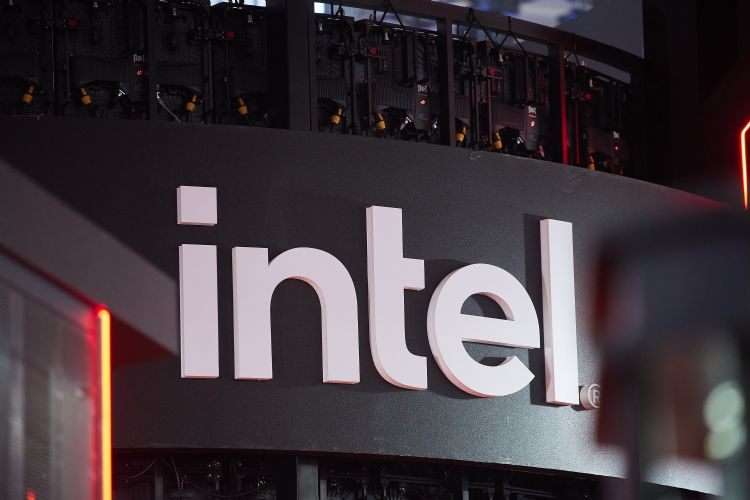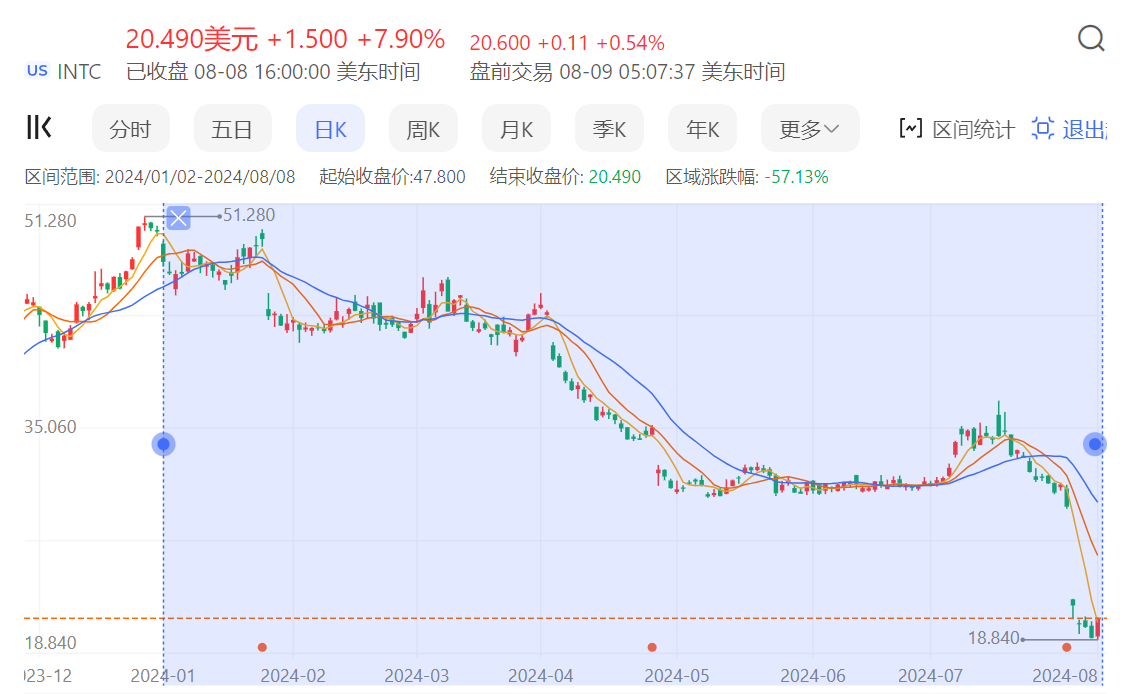Share price plunges nearly 60% this year! Angry shareholders file class action lawsuit against Intel
The Construction Laborers Pension Trust of Greater St. Louis, one of Intel's shareholders, launched a class-action lawsuit against Intel as lead plaintiff on Wednesday, alleging that the company concealed problems with its internal chip-making operations.
The Construction Laborers Pension Trust of Greater St. Louis, one of Intel's shareholders, launched a class-action lawsuit against Intel on Wednesday as the lead plaintiff, alleging that the company hid its internal before reporting a net loss and massive layoffs of 15,000 employees chip-making business problems.
Last week, Intel released its second-quarter earnings and future outlook, both of which fell short of expectations.
The data showed that Intel's second-quarter revenue fell 1% year-over-year to $12.83 billion, below analysts' expectations of $12.94 billion. Net loss of $1.6 billion, compared with a profit of $1.5 billion in the same period a year earlier, turning a year-on-year profit into a loss, adjusted earnings per share of only $0.02.
For the third quarter guidance, Intel expects revenue to be between $12.5 billion and $13.5 billion, below analysts' expectations of $14.39 billion. At the same time, Intel expects to report an adjusted loss of $0.03 per share for the third quarter, compared to market expectations of a profit of $0.30, with margins expected to be 38%, down nearly 8% year-over-year.
The data was released at the same time that Intel announced it would be cutting costs by $10 billion in 2025, which will mainly include layoffs and a halt to dividend payments.
Intel said it would lay off about 15 percent of its workforce, affecting about 15,000 jobs, while suspending its dividend, which has been paid since 1992, for the first time in the company's 32-year history.
On Aug. 2, the day after Intel released its quarterly results and announced the layoffs and dividend suspension, its stock plunged 26 percent.
In the lawsuit, shareholders accused Intel of concealing problems in its internal chip-making business, leading to dismal second-quarter results, which in turn caused the stock's market value to shrink by more than $32 billion in a single day, and shareholders suffered losses as a result.

Unlike many of its competitors, Intel designs and manufactures chips through its foundries. This decision helped Intel receive $8.5 billion in federal funding through the Chip Act. According to the lawsuit, Intel told investors that the in-house manufacturing model would save Intel between $8 billion and $10 billion by 2025. However, the suit claims that the cost of the measure far exceeded investors' expectations.
The lawsuit reads, "Unbeknownst to investors, Intel's foundry business was struggling, costing billions of dollars more than investors believed, and, in fact, the division's revenue growth declined during the period of the lawsuit (Jan. 25 to Aug. 1, 2024)."
Intel's highly-anticipated foundry business realized revenue of $4.3 billion in the second quarter, up 4% year-over-year and down 1% sequentially. The operating loss for the foundry business widened further to $2.8 billion, with an operating margin of -65.5%.
On a conference call for second-quarter earnings, Zinsner said Intel's decision to move Intel 4 and Intel 3 chips more quickly from its Oregon facility to one in Ireland will result in higher costs in the short term, but higher gross margins later.
The class action lawsuit also names CEO Patrick Gelsinger and CFO David Zinsner as co-defendants, alleging that they made "false and misleading" statements that caused the company's stock price to be "artificially inflated ".
Among the "misleading" statements cited in the lawsuit is a January 2024 press release issued by Intel. Zinsner, Intel's chief financial officer, said, "We continued to improve operational efficiencies in the fourth quarter and easily achieved our commitment to save $3 billion in 2023. We expect to drive further efficiencies in 2024 and beyond as we implement our new internal manufacturing model, which is designed to improve transparency and accountability and deliver higher returns on our shareholders' capital."
The shareholders claim in the lawsuit that these were "materially false and misleading" statements that failed to disclose that "Intel's foundry business was experiencing cost spikes that required more capital expenditures than investors expected and resulted in Intel suffering a $7 billion loss in 2023. "
As of the close of the U.S. stock market on August 7, Intel's stock price has fallen 60% this year.

·Original
Disclaimer: The views in this article are from the original Creator and do not represent the views or position of Hawk Insight. The content of the article is for reference, communication and learning only, and does not constitute investment advice. If it involves copyright issues, please contact us for deletion.